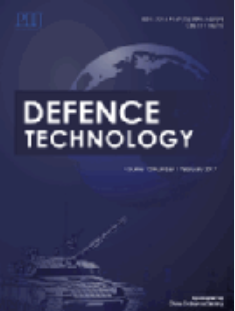含能金属有机骨架、碱土和碱土金属盐和过渡金属配合物的进展:爆速、热和压力的预测模型
IF 5.9
Q1 ENGINEERING, MULTIDISCIPLINARY
引用次数: 0
摘要
最近的进展导致了各种新型含金属炸药的合成,特别是高能金属有机框架(EMOFs),其特征是在有序的晶体结构中具有高能配体。与传统的化合物相比,这些炸药具有显著的优势,包括更高的密度、更大的爆炸热、更好的机械硬度和优异的热稳定性。为了有效地评价它们的爆轰性能,有一个可靠的方法来预测爆轰热、速度和压力是至关重要的。本研究利用实验数据和领先的商业计算机代码的输出来确定不同金属氧化物的合适分解途径,促进碱金属盐、金属配位化合物以及EMOFs的爆炸性能的直接计算。新模型提高了爆轰速度的预测可靠性,与实验结果更加接近,其均方根误差(RMSE)为0.68 km/s,而现有方法的均方根误差为1.12 km/s。此外,它适用于更广泛的化合物,包括那些含有Sr, Cd和Ag的化合物,并提供比以前的预测模型更符合计算机代码输出的EMOFs预测。本文章由计算机程序翻译,如有差异,请以英文原文为准。

Advancements in energetic metal-organic frameworks, alkali and alkaline earth metal salts, and transition metal complexes: Predictive models for detonation velocity, heat, and pressure
Recent advancements have led to the synthesis of various new metal-containing explosives, particularly energetic metal-organic frameworks (EMOFs), which feature high-energy ligands within well-ordered crystalline structures. These explosives exhibit significant advantages over traditional compounds, including higher density, greater heats of detonation, improved mechanical hardness, and excellent thermal stability. To effectively evaluate their detonation performance, it is crucial to have a reliable method for predicting detonation heat, velocity, and pressure. This study leverages experimental data and outputs from the leading commercial computer code to identify suitable decomposition pathways for different metal oxides, facilitating straightforward calculations for the detonation performance of alkali metal salts, and metal coordination compounds, along with EMOFs. The new model enhances predictive reliability for detonation velocities, aligning more closely with experimental results, as evidenced by a root mean square error (RMSE) of 0.68 km/s compared to 1.12 km/s for existing methods. Furthermore, it accommodates a broader range of compounds, including those containing Sr, Cd, and Ag, and provides predictions for EMOFs that are more consistent with computer code outputs than previous predictive models.
求助全文
通过发布文献求助,成功后即可免费获取论文全文。
去求助
来源期刊

Defence Technology(防务技术)
Mechanical Engineering, Control and Systems Engineering, Industrial and Manufacturing Engineering
CiteScore
8.70
自引率
0.00%
发文量
728
审稿时长
25 days
期刊介绍:
Defence Technology, a peer reviewed journal, is published monthly and aims to become the best international academic exchange platform for the research related to defence technology. It publishes original research papers having direct bearing on defence, with a balanced coverage on analytical, experimental, numerical simulation and applied investigations. It covers various disciplines of science, technology and engineering.
 求助内容:
求助内容: 应助结果提醒方式:
应助结果提醒方式:


